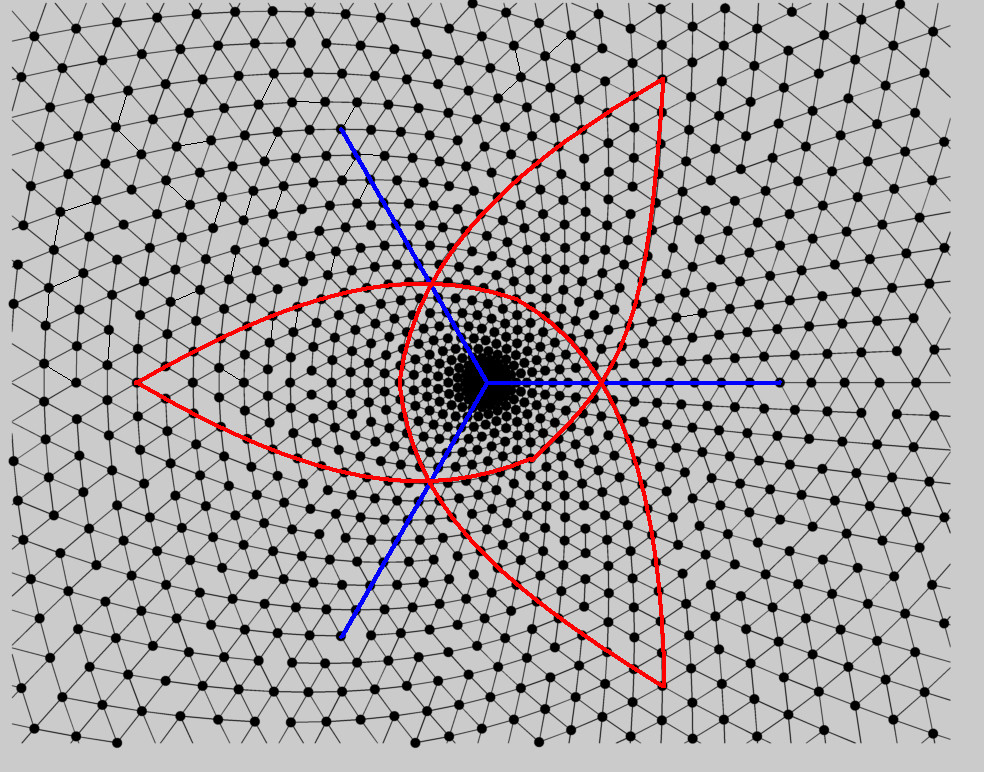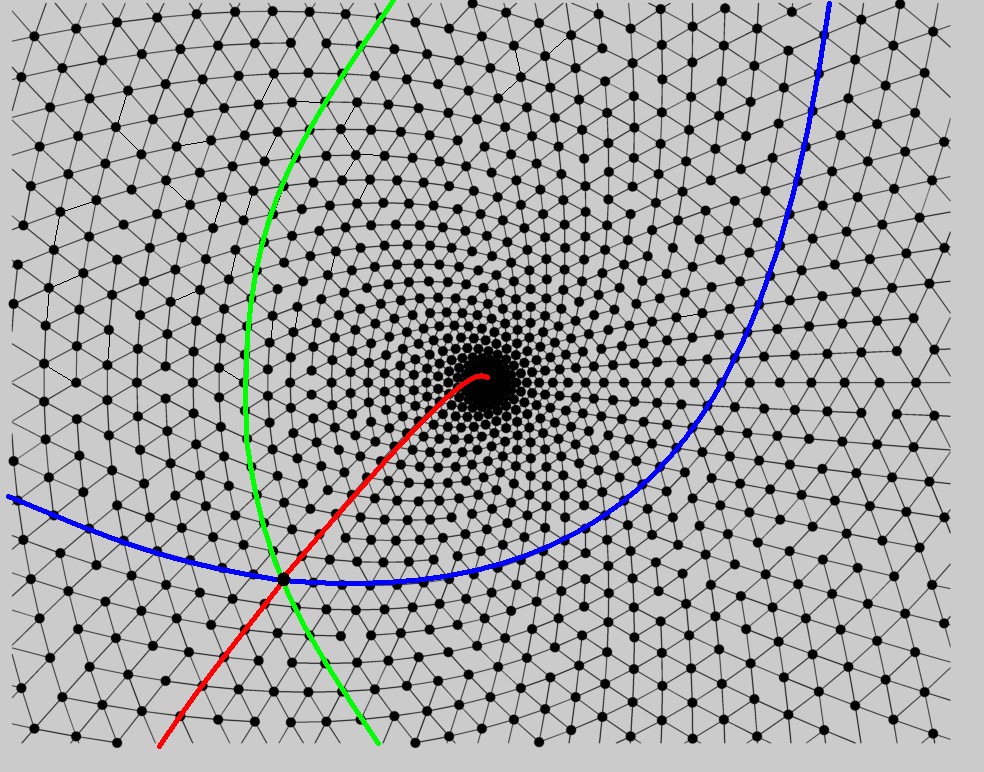This question arises apropos of an earlier question I asked that was (VERY!!!) helpfully answered by Anton Petrunin:
Fitting a mesh to a density function
The picture below is the image of a regular equilateral triangular lattice in the complex plane under the map $z \mapsto z^2$:

(for whatever reason, I seem to be missing a few links in the picture above, but I hope this is sufficient). This picture has two nice visual properties, namely that the points are distributed in a "regular" or "predictable" way, and that the density of points becomes more concentrated as we move towards the origin. My question is, are there configurations of points in 3 dimensions that also have these two visual properties? Owing to Liouville's theorem, I realize that I won't be nearly as fortunate in constructing a nice and easy conformal mapping, so I'm just looking for any possible way to place points in $\mathbb{R}^3$ where I could get some kind of behavior similar to that pictured above. The best I can think of would be some sort of concentric geodesic buckyball-type structures, or possibly the cartesian image of a regular lattice in spherical coordinates, but I'm wondering if there's anything that's more interesting.
I should also mention that I don't necessary need the configuration to be "completely regular". That is, I'm happy to tolerate occasional points that are inconsistent with the rest of the configuration; there should just be some kind of visual consistency that one would readily observe by inspection.



